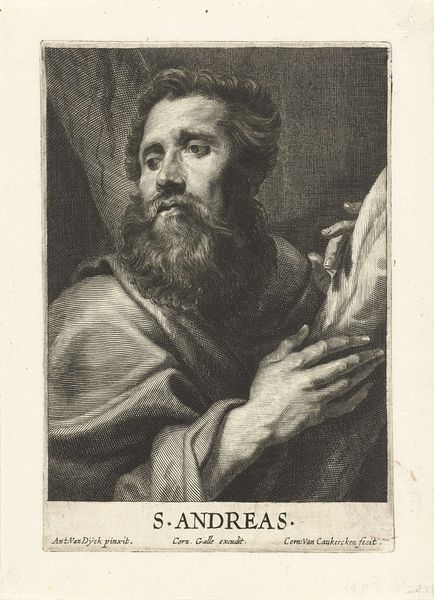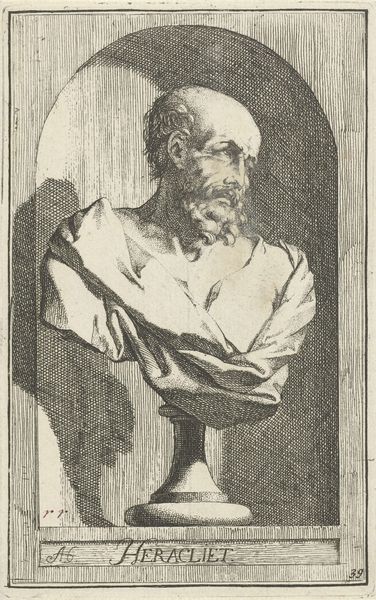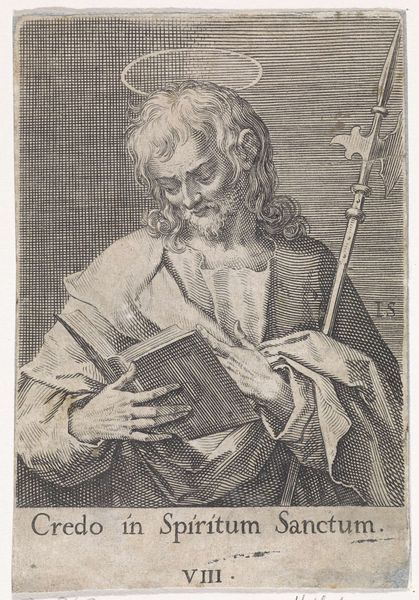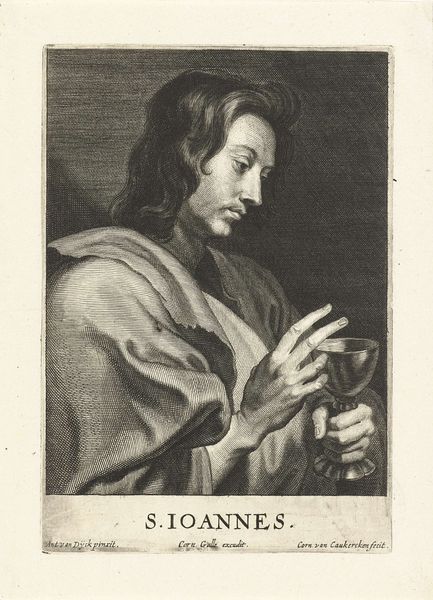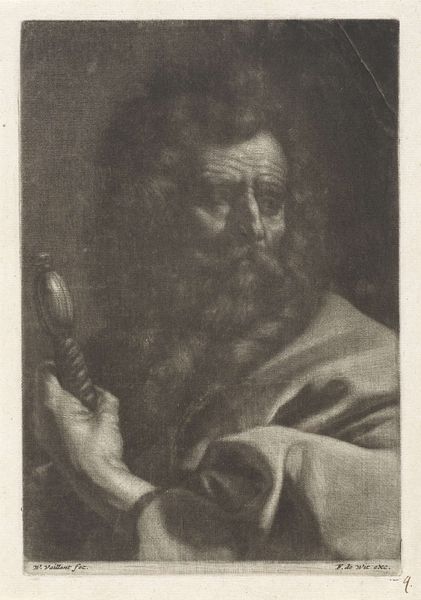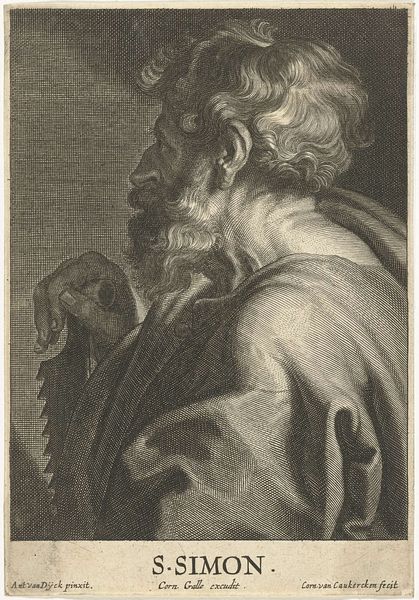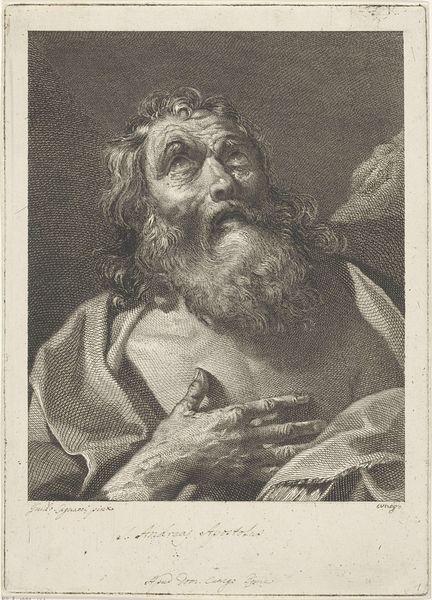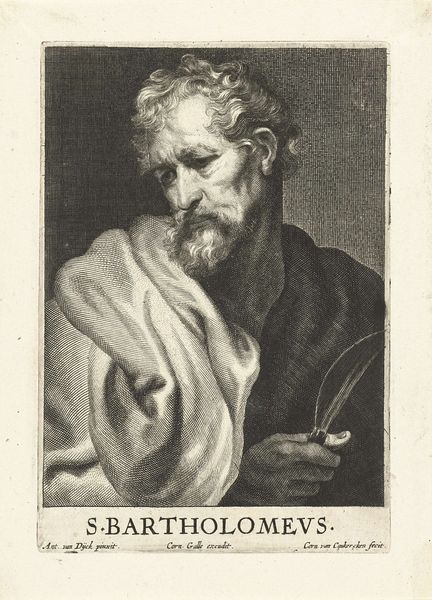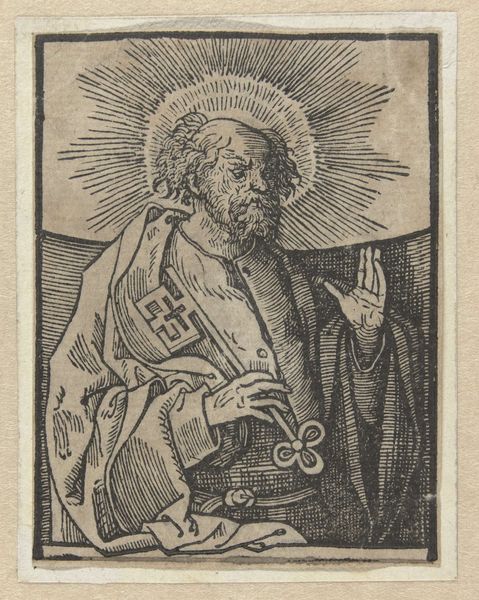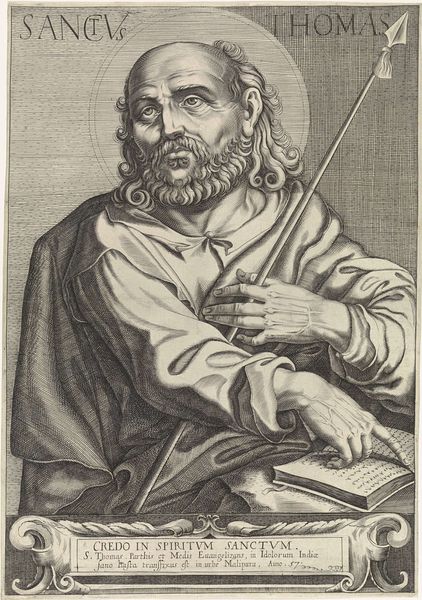
print, engraving
#
portrait
#
self-portrait
#
baroque
# print
#
old engraving style
#
historical photography
#
history-painting
#
engraving
Dimensions: height 170 mm, width 110 mm
Copyright: Rijks Museum: Open Domain
Editor: This engraving, "Petrus" by Cornelis van Caukercken from around the mid-17th century, depicts a man looking upwards with a hopeful expression. It gives a real sense of yearning. What do you see in this work? Curator: Beyond the surface, this image speaks to the fraught relationship between faith, power, and representation. Here’s a figure, identifiable as Saint Peter, rendered with an intense gaze and palpable vulnerability. It invites us to consider the historical power dynamics within the church, particularly regarding who gets to speak for the divine, and how. Think about the context of 17th-century Europe, where religious authority was constantly being challenged. Editor: So, the way he's looking up isn’t just about piety, it’s more about power structures? Curator: Exactly. His upward gaze can be interpreted not only as religious devotion, but as a visual signifier of hierarchical power, an appeal to an authority beyond the earthly. How does this image reflect or subvert the traditional representations of religious figures, and what does that tell us about the artist's intentions, or even the commissioner's agenda? Editor: It's interesting how something that appears straightforward, like a religious portrait, can be so deeply intertwined with complex social and political issues. Curator: Precisely. Art is never created in a vacuum, and understanding these historical and social contexts allows us to have a much more informed, critical conversation. Considering identity and representation helps us to not only analyze images, but to promote greater equity and accessibility in art history as a whole. Editor: I hadn’t considered those layers before, but it completely changes how I see the artwork. Thanks for sharing.
Comments
No comments
Be the first to comment and join the conversation on the ultimate creative platform.
